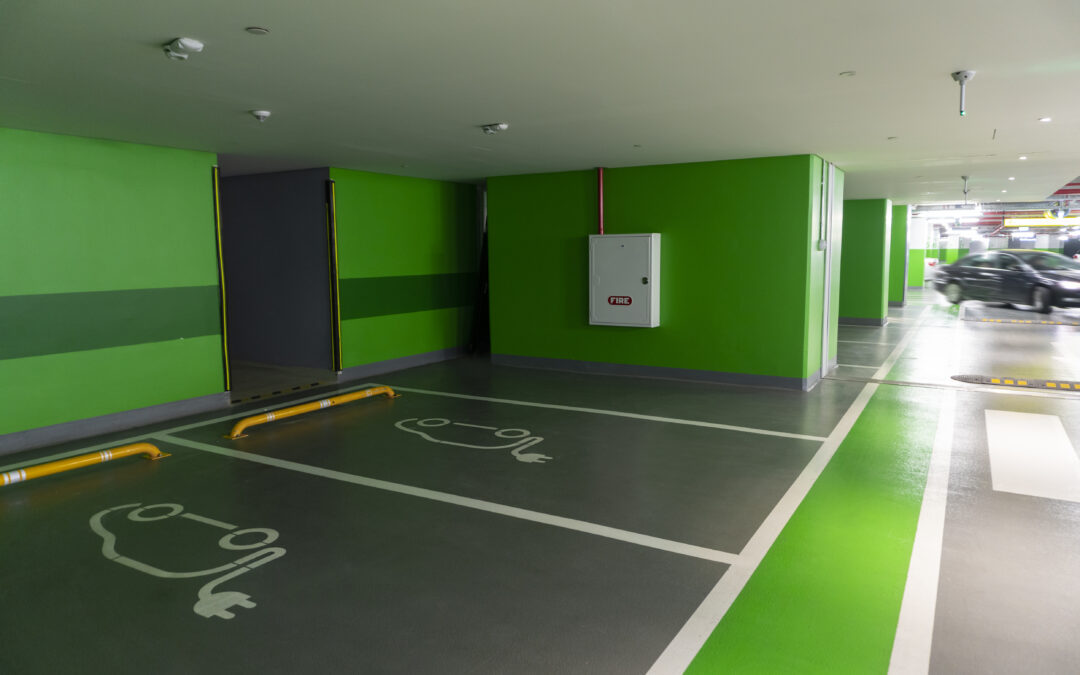As electric vehicle adoption continues to rise in the U.S., community associations must prepare to accommodate the trend. In 2022, 6% of all new cars purchased were electric, and Bloomberg predicts that this market share will grow to 50% by 2030. The vast majority of EV owners expect to charge at home, which means that community associations need a plan now to provide this amenity or offer residents guidelines to install their own chargers.
“The Biden administration’s plan is to have all vehicle sales by 2030 be electric,” says Aaron Luque, CEO of EV charging station provider EnviroSpark Energy Solutions. “More than 80% of charging is done at home.” That’s why community association board members and managers need to act quickly, explains Luque.
Placing electric vehicle charging stations in a community association can be challenging, as ownership and use of parking spaces varies. Additionally, some states and municipalities have passed laws regulating charging station requests. Before beginning plans to place a station, communities should review state and local laws, as well as their governing documents. It is important to determine whether parking spaces are considered common elements, assigned, unassigned, or limited common elements. If parking is a common element, it must be determined whether the board has the authority to install stations.
Another challenge that community associations face in implementing electric vehicle charging is the process of paying for, servicing, and administering stations, but there are several strategies that can be taken to maximize efficiency and minimize cost. For community associations that own and have available common area parking spaces, Luque suggests one of the following strategies:
1. Community owned
For communities comfortable with paying upfront costs on installing equipment, this option allows the customer to have ownership of the chargers. In this case, a property would purchase the chargers outright, then choose whether to offer the charging to community members for free or as a paid amenity. The customer also would have the choice between using networked or non-networked chargers. Though this may sound like a lot of responsibility, the association would still have support via a customer service hotline, extended hardware warranty, and guaranteed 98% uptime, which refers to the percentage of time over a calendar year that EV charging services are available.
2. As a service
For communities interested in providing charging services on their own terms but hoping for lower upfront costs and operation, this can be a great strategy. In this case, a community would pay a third party a fixed monthly fee to handle up to 100% of the design, installation, and hardware costs for the charging stations. The community would still be able to have flexibility in choosing who can use the station, and whether it is free or for a charge.
3. Network program
For communities hoping to offer charging without any upfront or monthly fees, a network program can be the most efficient. In this case, a third party would cover up to 100% of the design, installation, and hardware costs, charging zero installation or maintenance fees to the property. Drivers would pay individually for the amount that they charge, and the community would still have access to data on the energy use. This can be used to scale charging availability without worrying about upfront fees.
Other considerations that communities should take into account are logistical, fire, and safety concerns. Charging stations should satisfy building code requirements, adhere to an association’s aesthetic standards, and should only be placed and handled by a licensed and insured professional.
Before placing charging stations in your community, it is important to determine whether you have the authority to make those changes and to consider the best options for financing, servicing, and administering those stations.
>>Learn more about electric vehicle charging stations in community associations. Listen to CAI’s on-demand webinar: Shock to the System: Preparing Your Community for Electric Vehicles.


